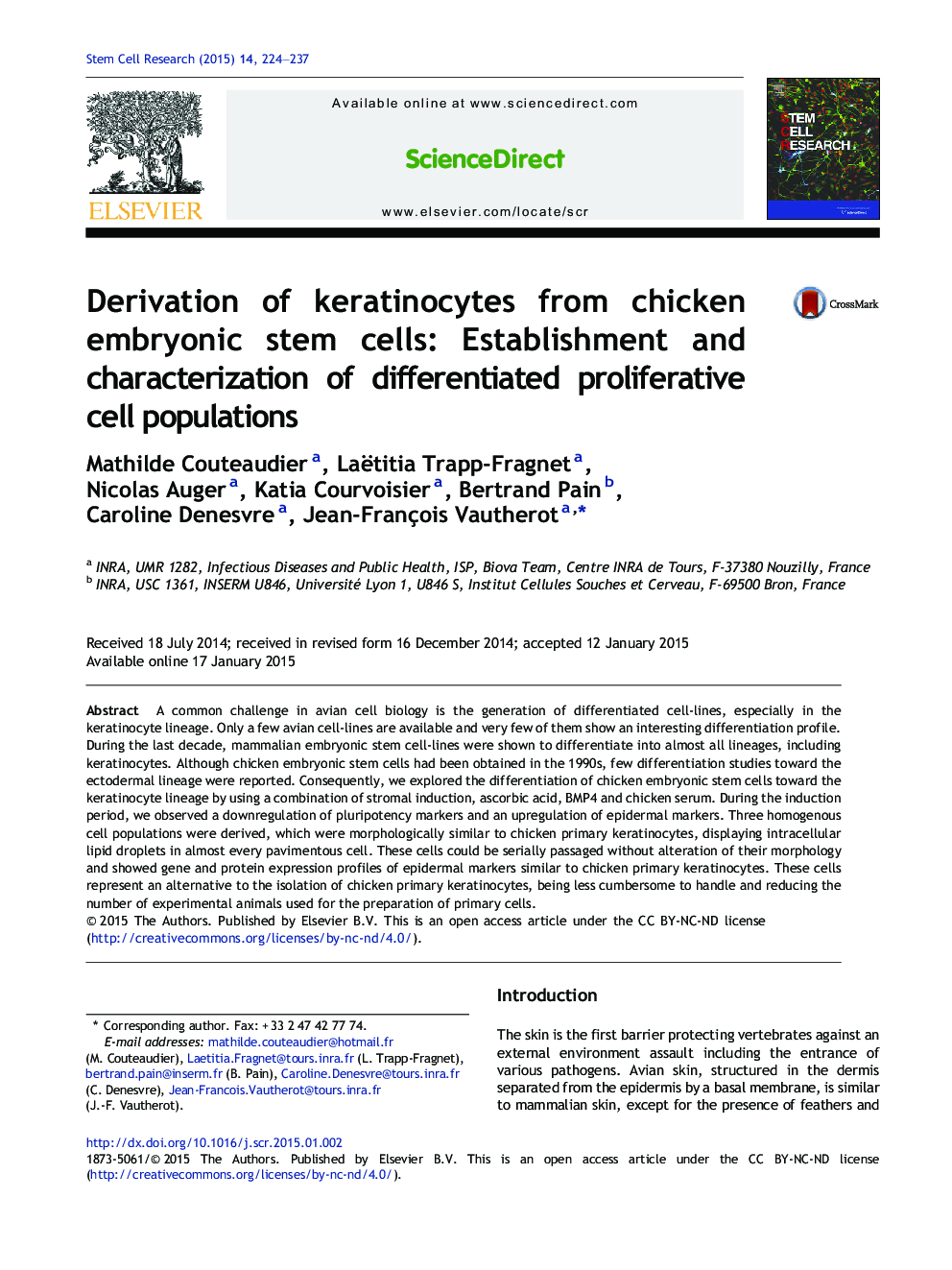| Article ID | Journal | Published Year | Pages | File Type |
|---|---|---|---|---|
| 2094058 | Stem Cell Research | 2015 | 14 Pages |
•Differentiated keratinocytes were derived from chicken embryonic stem (cES) cells.•Induction of epithelial morphology was concomitant to the upregulation of keratinocyte markers.•K-cES cell populations displaying a homogenous phenotype were selected and serially passaged.•K-cES cells show morphological characteristics similar to chicken primary keratinocytes (CPK).•K-cES cells express markers of the keratinocyte lineage and undergo differentiation.•K-cES form detergent-insoluble cell envelopes, indicative of corneocyte differentiation.
A common challenge in avian cell biology is the generation of differentiated cell-lines, especially in the keratinocyte lineage. Only a few avian cell-lines are available and very few of them show an interesting differentiation profile. During the last decade, mammalian embryonic stem cell-lines were shown to differentiate into almost all lineages, including keratinocytes. Although chicken embryonic stem cells had been obtained in the 1990s, few differentiation studies toward the ectodermal lineage were reported. Consequently, we explored the differentiation of chicken embryonic stem cells toward the keratinocyte lineage by using a combination of stromal induction, ascorbic acid, BMP4 and chicken serum. During the induction period, we observed a downregulation of pluripotency markers and an upregulation of epidermal markers. Three homogenous cell populations were derived, which were morphologically similar to chicken primary keratinocytes, displaying intracellular lipid droplets in almost every pavimentous cell. These cells could be serially passaged without alteration of their morphology and showed gene and protein expression profiles of epidermal markers similar to chicken primary keratinocytes. These cells represent an alternative to the isolation of chicken primary keratinocytes, being less cumbersome to handle and reducing the number of experimental animals used for the preparation of primary cells.
